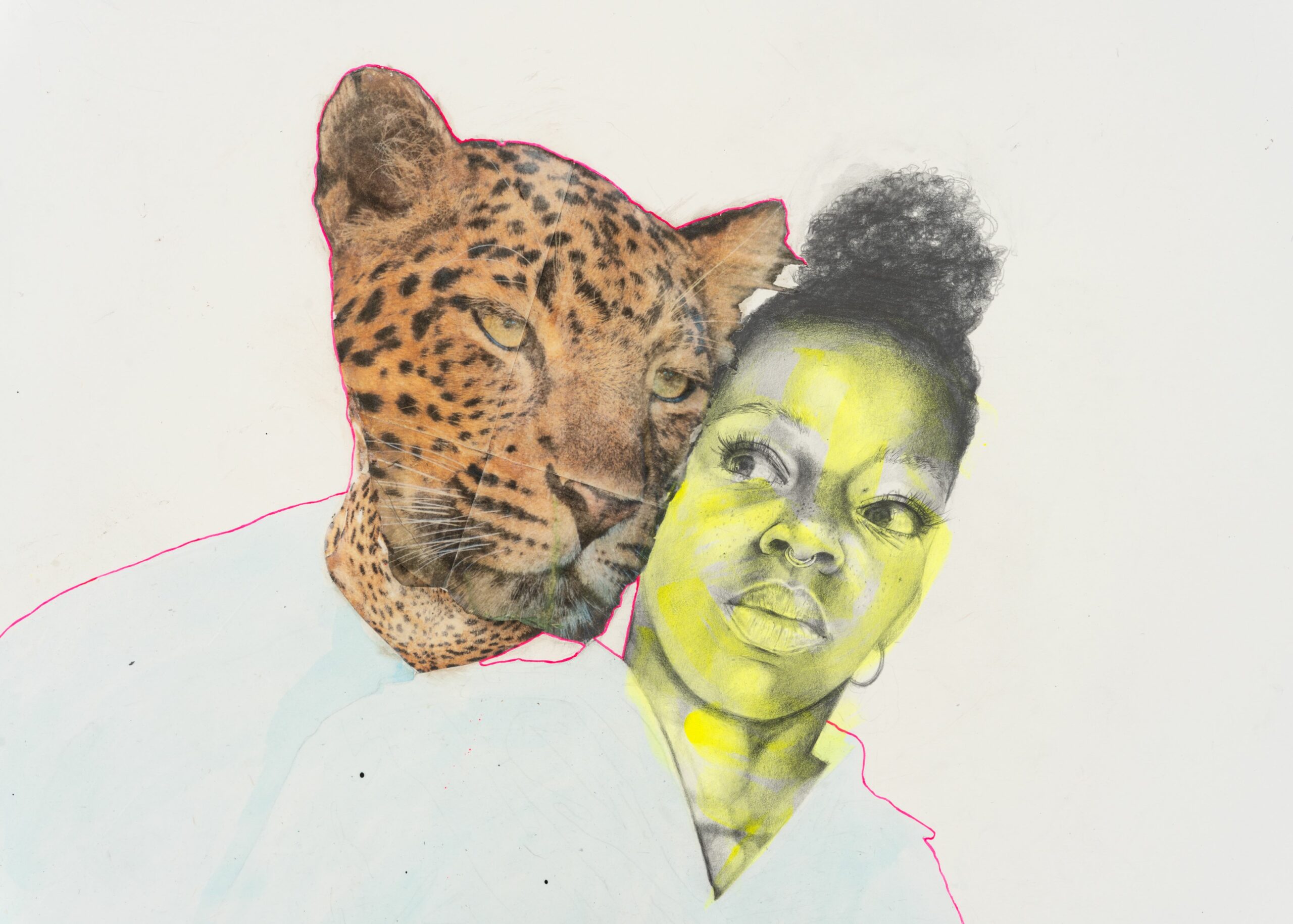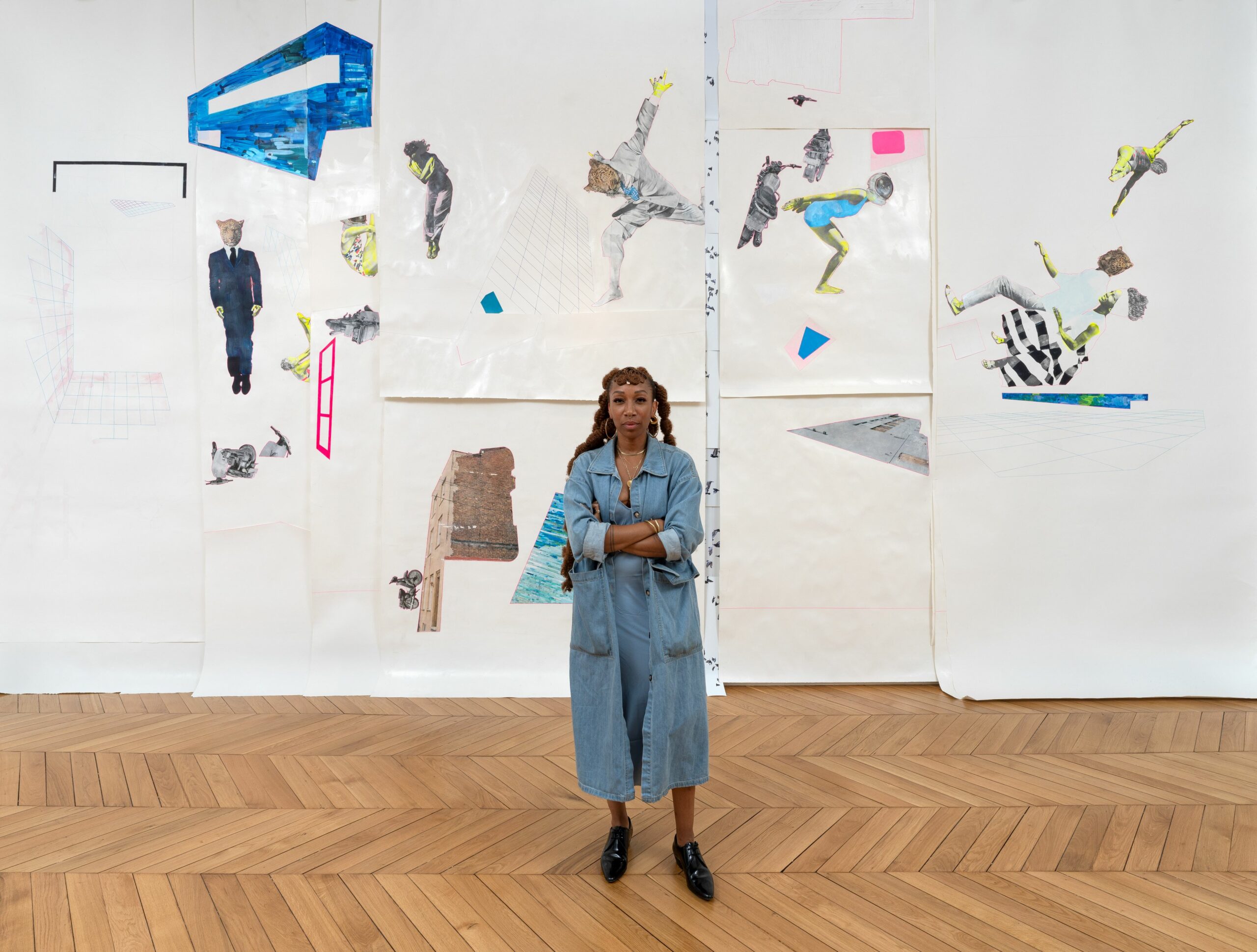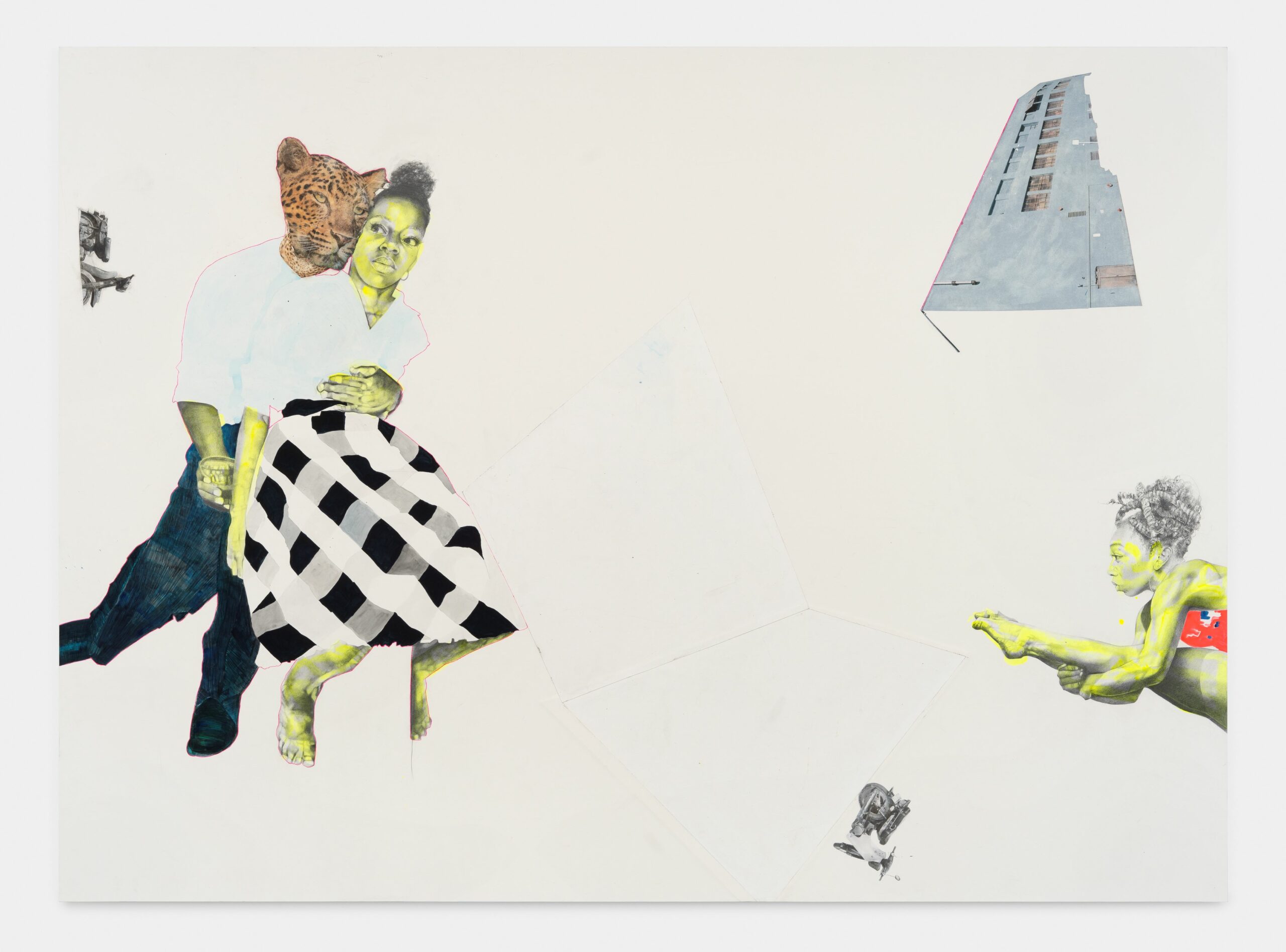
ruby onyinyechi amanze has spent the best part of the last month showcasing The Poetics of Space, her second solo show with Mariane Ibrahim Gallery and her first solo in Paris In the exhibition, the artist returned to topics like space, movement and motion – concepts that remain consistently integral to her practice. Also making a return are the seven motifs that find themselves all over her work in new configurations – birds, bikes, architecture, ada (an alien), audre (a hybrid leopard), swimming pools (also an architecture) and the paper itself.
The exhibition takes its title from an architecture book by the same name. It’s more like a philosophy book…about the ephemeral impacts of architecture on our emotions or memory. I’m interested in spaces and architecture from a more poetic lens. This is not linear or narrative. I’m not telling a sequential story. I have my set vocabulary, and I’m playing with how I put it together; that, for me, is closer to writing poetry than to writing prose.”
ruby onyinyechi amanze was born in Nigeria and raised in the United Kingdom. She eventually moved to the United States, where she earned her B.F.A. summa cum laude from the Tyler School of Art at Philadelphia’s Temple University in 2004. She then went on to earn a M.F.A from Cranbrook Academy of Art in Bloomfield Hills, Michigan. amanze’s experience of being raised across three different continents during, perhaps the most formative years of her life, has undoubtedly shaped her practice as an artist.
In a conversation that takes place as amanze’s exhibition The Poetics of Space comes to an end, amanze invites us into her practice over Zoom and peels back the process and thought behind her practice.

How is your day going?
It’s pretty chill. I’m just in the studio cleaning up a little, getting ready to start some new work. After each show I have to reset the studio. It’s kind of a funny space – the inbetween. Sometimes it takes a while to get my footing again. The work seems to continue regardless of whether or not I’m actively producing. When I’m in a slow period, I have to trust that things are moving along.
What is your upcoming work going to be about?
The works are always about space. I’ll be working with the same seven elements, exploring new configurations and relationships. Since it’s an ongoing body, I kind of have the work already set out for the foreseeable future! For each new exhibition of work, I’m challenged to innovate the space both within the drawing plane and in a custom three dimensional way of presentation each drawing.
In the past, your work has touched on displacement as much as movement and cultural hybridity. I imagine that comes from your multicultural background. Is that true?
I’m not sure my work ever really touched on displacement. Movement and cultural hybridity, yes. When I was really young, perhaps I felt displaced, but that shifted as I grew into the validity of my reality of being from many places. Certain words can get put on you early on as an artist and they’re just inaccurate. As your work evolves, you have help people shift with you. My work has nothing to do with displacement. Searching for roots, longing, belonging – all are authentic experiences and none of them are my personal concern. I’m quite happy with my connections to multiple places and my ability for them to exist in me simultaneously. I’m not the only person that was born in one place and then grew up in another. You can add on X number of countries to that narrative. Not to mention, language, citizenships, education etc. It’s so complex, yet the essence of it is still a very common story. I’m interested in these types of identities and spaces.
You mentioned Third Space as a theory that resonates with you. Can you speak about this?
It’s a term coined by Homi K. Bhabha. It refers to a space that is made where multiple identities merge to form a hybrid. A related term is Third Culture Kid, first used by John and Ruth Useem and talking about someone who, in their early developmental years, lived in a country different than their parent’s country of origin. I’ve lived in Nigeria, England and the U.S. and all of these places are inextricably linked to who I am. The overlapping of them becomes another place in itself while also retaining access to all of the points. There’s a certain freedom in the remixing of cultures. I can take a piece from here and there..

Was ada a way for you to insert yourself or a part of yourself into your work?
Initially yes, but not anymore. Now I’m just drawing from my likeness but am very clear it’s a shape, a form all in the service of making a space.
What emotion do you want people to experience when witnessing Poetics of Space?
I want them to be aware of the space which has been constructed. There are a lot of pieces that interact with the architecture in ways that are not typical. So, that’s an important aspect that you will see if you walk into the gallery; you’ll immediately be aware that the place has been altered. Reckoning with their individual relationship to space is what I am hoping the viewer feels and sees when they view the work.
You said that in your practice, you are always looking for an off-ness, something to break the space. Why is that?
It’s something that guides the composition. I’m starting with the empty paper, and then I’m choreographing the seven elements, which ones to use and how to move them across the paper. There are ways of composition that are very classical and traditional. We see this a lot in approaches to portraiture. I’m not interested in spatial relationships that adhere to these sorts of formulas. I start with some awkwardness, some tension – every space of the paper is available to me, including the edge or corners. The choices I make in framing or mounting the work allow me to engage directly with physical space in new ways. And that’s part of the point: I’m creating different spaces, not classical spaces.
Written by Desmond Vincent





